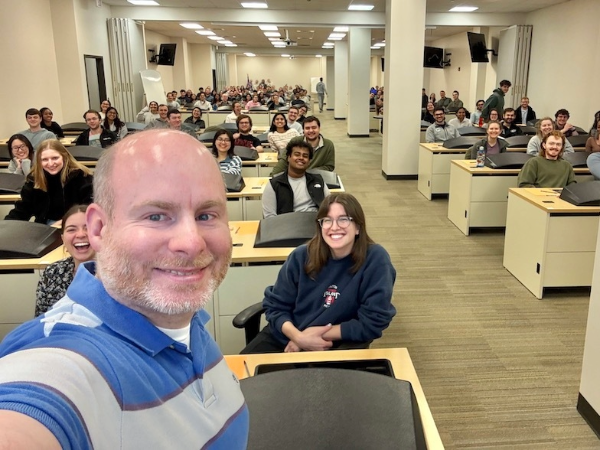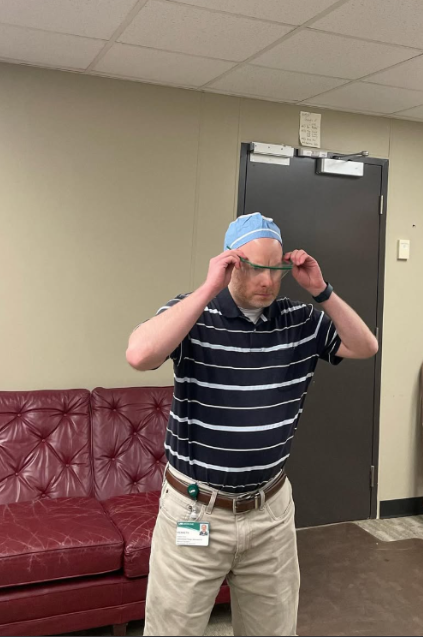 At UAB Heersink School of Medicine, many work quietly behind the scenes to ensure medical students have the tools, support, and structure to succeed. One key figure is Kenneth Hurd—a technician turned educator whose influence shapes everything from high-stakes exams to hands-on electives. His blend of technical expertise and student-centered service makes him a trusted presence during one of the most demanding phases of a future physician’s journey.
At UAB Heersink School of Medicine, many work quietly behind the scenes to ensure medical students have the tools, support, and structure to succeed. One key figure is Kenneth Hurd—a technician turned educator whose influence shapes everything from high-stakes exams to hands-on electives. His blend of technical expertise and student-centered service makes him a trusted presence during one of the most demanding phases of a future physician’s journey.
In 2008, he joined the Department of Medical Education as an audiovisual technician, supporting lecture recordings and managing audience response systems used within the classroom. By 2015, he advanced to senior instructional design specialist in the Office of Undergraduate Medical Education, where he oversees exam implementation and manages a range of digital learning platforms.
In this role, Hurd has seen medical school transform through the modernization of assessments—transitioning from paper quizzes to digital systems that streamline testing and give faculty real-time insights into student progress. He compiles data from team-based learning (TBL), Questions at UAB (QABs), and case-based collaborative learning (CBCL), providing analytics that help shape curriculum decisions.
Whether proctoring exams, troubleshooting last-minute tech issues, or ensuring everything runs smoothly, Hurd is a reliable, steady presence in the high-pressure world of medical education. His calm demeanor and behind-the-scenes support have earned him the trust of students and faculty alike.
In 2016, drawing on his broadcasting background, Hurd launched a special topics course: Lights, Camera, Medical Education. This one-week elective, offered each October and April, gives students hands-on experience in video production—from pre-production and storyboarding to filming and editing. Students collaborate with the Office of Standardized Patient Education (OSPE) to create patient encounter videos that balance clinical accuracy with effective storytelling. The course culminates in a capstone video project, offering a comprehensive look at creating meaningful instructional videos—especially valuable for those interested in teaching or clinical education.
Though much of his work happens behind the scenes, Hurd’s impact is central to the student experience. His role overseeing exams means he interacts regularly with students during their preclinical years, building meaningful relationships. His calm under pressure has made him a trusted figure during high-stress moments for students.
 This appreciation has manifested in memorable ways. On one exam day, the entire second-year class dressed like Hurd—a playful tribute that left a lasting impression. Students later invited him to open the Best Medicine Show and even cast him in a skit as an investigator trying to figure out who was “stealing Wi-Fi” from Volker Hall. These moments reflect how much students value his support and presence.
This appreciation has manifested in memorable ways. On one exam day, the entire second-year class dressed like Hurd—a playful tribute that left a lasting impression. Students later invited him to open the Best Medicine Show and even cast him in a skit as an investigator trying to figure out who was “stealing Wi-Fi” from Volker Hall. These moments reflect how much students value his support and presence.
One of the most recognizable aspects of Hurd’s connection to students is his signature phrase: “All right, sports fans—get ’er done.”
While the use of the phrase before each exam preceded Hurd, he faithfully accepted the baton from his former predecessor, John Caldwell, Ph.D. It was tradition for Caldwell to say it to classes before exams. In Caldwell’s final semester prior to retirement, students asked for Hurd’s best Caldwell impression, and Hurd responded with the familiar phrase, sparking applause from the class.
Students later asked him to keep saying it, as it helped them calm down before beginning their testing. What started as a spontaneous joke became a beloved routine—and part of Heersink tradition, so much so that during the 2025 Commencement ceremony, keynote speaker Holden Thorp, Ph.D., editor-in-chief of Science, gave Hurd and the catchphrase a special shoutout.
It’s a simple phrase, but one that symbolizes Hurd’s lasting impact on students during their most formative years.
For Hurd, the most rewarding part of his role is watching students grow.
“Before this role, I was always in the background. Now, I get to really know the students,” Hurd said. “Seeing them move through the curriculum and see them do well is most rewarding.”
Whether guiding a student through video editing or fixing a tech glitch minutes before an exam, Kenneth Hurd leaves a mark far beyond the systems he manages. He’s part of the fabric of Heersink School of Medicine—steady, encouraging, and always ready with a familiar sendoff: “Get ’er done.”